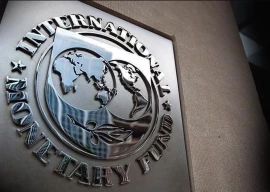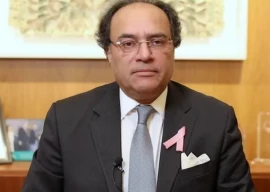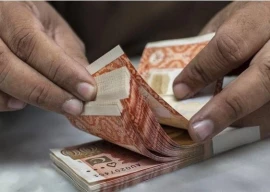
From earlier estimates of 15.5 million visitors per year, Tourism and Sports Minister Chumpol Silpa-archa estimated that the number of tourists dropped to about 12.5 million.
Taking up the challenge, Thai Airways International is working actively to boost tourism numbers to previous levels.
One of Thailand’s most sophisticated and successful industries, tourism accounts for between six and seven per cent of the country’s economy. Almost 20 per cent of the country’s employment is directly or indirectly linked to tourism, according to the Thailand’s National Statistical Office.
The airline is looking to boost numbers from Pakistan, where Thailand has traditionally been a popular destination for not just businessmen but also honeymooners. The plan is to do this by increasing services and flight connectivity. Chris Chantaliton, the region’s director for Thai Airways, told The Express Tribune that Pakistani tourists will be able to visit all parts of Thailand because of better connectivity.
“Thai Airways looks towards Pakistan as one of the emerging markets for attracting customers to cover losses,” he said while speaking at the airline’s 50th anniversary celebration.
These efforts are part of the airline’s restructuring plan that relies heavily on leisure traffic. Thai Airways is also strengthening its services in other countries as well.
The carrier, which started operations in Pakistan in 1976, currently has weekly flights from three cities of Pakistan. These include four weekly flights from Karachi, five from Lahore and three from Islamabad.
Chantaliton said that the airline is currently consolidating its service between the two countries. “That is why this season we have increased our service between Bangkok and Lahore, as well as Bangkok and Islamabad,” he explained.
Pakistan is a competitive market for carriers from the Far East. Traffic is shared with Cathay Pacific, which Thai Airways sees as its biggest competitor. Cathay offers four flights per week from Karachi to Bangkok and sometimes it is also possible to get the ticket slightly cheaper than Thai Airways.
Pakistan International Airlines, on the other hand, is not a direct competitor since the two airlines have signed a code-sharing agreement.
One recurring complaint that passengers travelling on Thai have brought up is that the airline usually runs old aircraft on the Pakistan route. To address these reservations, the airline official responded that the fleet of aircraft was being upgraded from Airbus A300 to the latest Airbus A330 planes. Delivery of the new fleet of A330s is expected from next year onwards.
Thai Airways was ranked the ninth best airline in the world by ‘Skytrax’ in the 2010 World Airline Awards despite the fact that it has a relatively small fleet in comparison to other airlines.
The managers feel that rather than competition in the international market, alliances are of more benefit to them.
“We try to work together with other airlines rather than competing against one another,” he explained. “We promote Thailand and Bangkok as a hub for Asia and that is why we have partners like Lufthansa, SAS and United Airlines. We can also provide connectivity from Thailand to Australia, New Zealand and within Asia.”
Published in The Express Tribune, August 22nd, 2010.
1717421843-0/Doja-Cat-(1)1717421843-0-405x300.webp)











1727268465-0/Untitled-design-(42)1727268465-0-270x192.webp)




COMMENTS (3)
Comments are moderated and generally will be posted if they are on-topic and not abusive.
For more information, please see our Comments FAQ